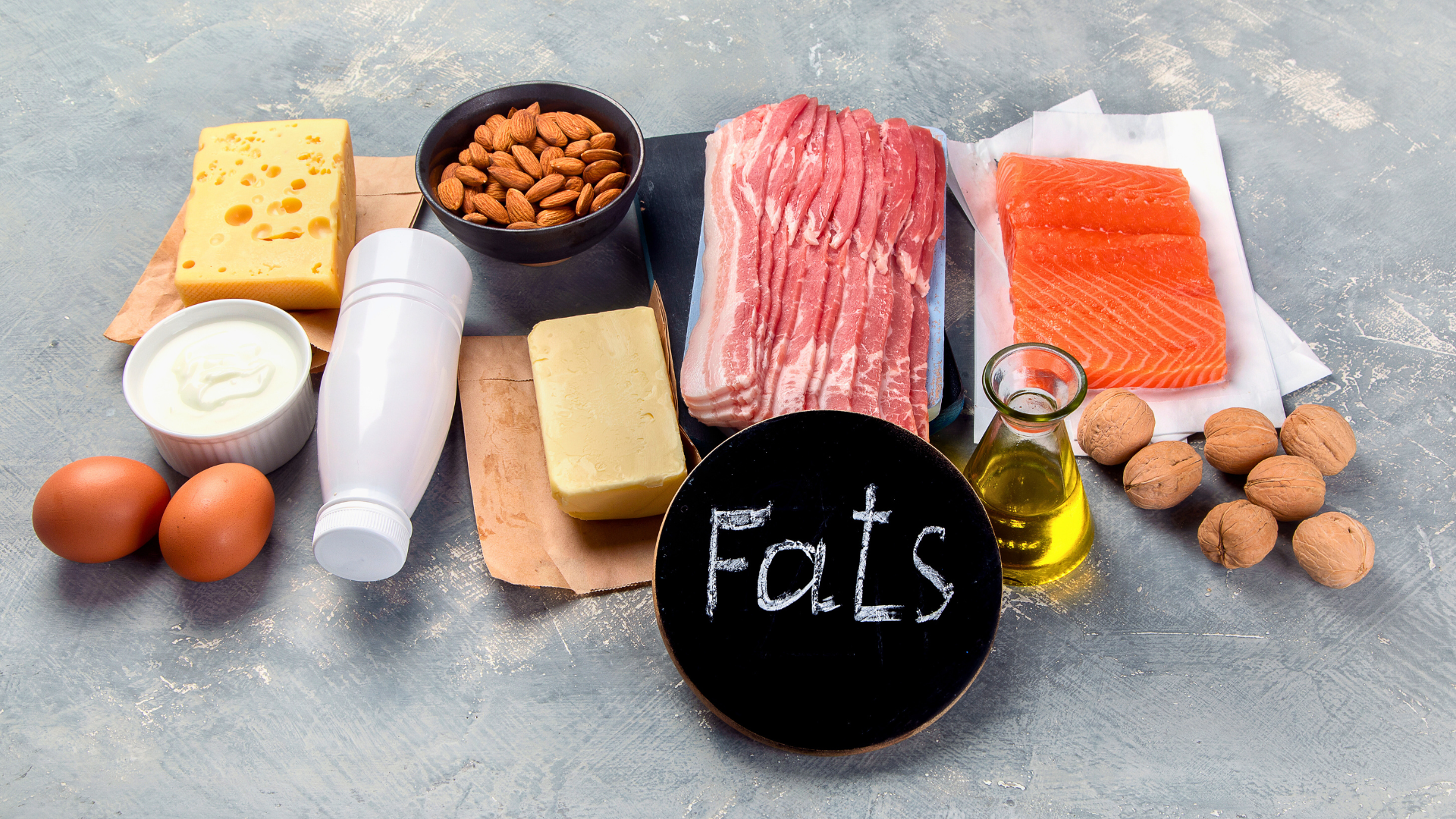By Jesse Oswald
•
January 6, 2025
Key points A recommended total carbohydrate intake ranges between 45-60% of the daily calories with a bottom value of 130 g/day to ensure the maintenance of adequate brain function Metabolic disorders, such as obesity and diabetes, disrupt fat utilization at rest, promoting an increased reliance on carbohydrates for energy production The phosphagen energy system, aerobic oxidative system, and anaerobic lactic system are the three energy systems activated during different types of exercise Consuming a rich in complex carbohydrates meal 2-3 hours before engaging in endurance exercise lasting >60 minutes can help prevent hypoglycemia Optimal post-workout recovery is achieved with co-ingestion of 1-2.2 g/kg carbohydrates and 0.3-5 g/kg proteins in a post-workout meal Excessive consumption of simple carbohydrates found in processed foods, refined grains, and deserts poses considerable risks for metabolic and overall health Complex carbohydrates, especially dietary fibers, found in whole grains, fruits, and vegetables, offer diverse health advantages Over the years, social media has fostered a negative view towards carbohydrate (CHO) consumption, advocating that dietary patterns aiming at weight loss should limit or even exclude carbohydrates. These beliefs intensify the debate about the dietary intake of the three primary energy sources (carbohydrates, proteins, and fats) during rest and physical activity. Individuals derive about half of their daily energy requirements from carbohydrates on average. However, food abundance and easy accessibility have led to excess carbohydrate intake, particularly plain sugars, placing a significant metabolic burden on the body. Therefore, being mindful of carbohydrates' quantity, quality, and distribution throughout the day is essential for establishing a well-balanced approach to nutrition and maintaining overall health. Carbohydrate classification Carbohydrates are the primary energy source of the human diet. Particularly, each gram of any type of CHO renders four calories. They can be classified into simple and complex carbohydrates, depending on the amount of sugar they contain. Simple carbohydrates Simple carbohydrates are short-chain sugar molecules that can be quickly digested, inducing a sharp increase in blood glucose levels. This feature makes them an immediate source of energy. However, the blood glucose spikes are followed by an equally rapid drop in glucose levels, leading to feelings of hunger and fatigue. This type of carbohydrate is divided into two major categories, monosaccharides, and disaccharides, based on the sugar units they consist of. Monosaccharides are composed of a single sugar unit and include glucose, fructose, and galactose. They are naturally present in honey and dried fruits but can also be found in elevated quantities in manufactured goods. Fructose, for example, particularly high-fructose corn syrup, is a constituent of many soft drinks and processed foods. Disaccharides, on the other hand, consist of two sugar units, composing sucrose, lactose, and maltose. Sucrose is naturally derived from sugarcane, sugar beets, honey, and dates, while lactose is the sugar of dairy products. Maltose is predominantly found in beer, barley, and various cereals. Complex carbohydrates Complex carbohydrates are also divided into subgroups: oligosaccharides, polysaccharides, and dietary fiber. Oligosaccharide molecules constitute a chain of 3-10 sugar units, while polysaccharides comprise ≥ 10 sugar units. Fibers are a distinct category, including both oligo- and polysaccharide components. Contrary to simple carbohydrates, complex carbohydrates increase blood glucose progressively, providing prolonged feelings of satiety. As their digestion and absorption are gradual, quick energy depletion is averted. Raffinose, stachyose, maltodextrin, and inulin are well-known representatives of the group of oligosaccharides. Various fruits, vegetables, legumes, and whole grains are rich in oligosaccharides. Likewise, typical polysaccharides encompass glycogen and starch. Polysaccharides exist in high concentrations in plant-based food sources such as fruits, vegetables, legumes, whole grains, and nuts. Several oligo- and polysaccharides belong to another special type of complex carbohydrates: dietary fiber. Examples of dietary fibers are pectins, beta-glucans, cellulose, and hemicellulose, all found in plant foods. Dietary fibers cannot be digested and absorbed by the small intestine; hence, they end up in the colon, where they are further metabolized by the gut microbiota or excreted. Based on their ability to be soluble in water, dietary fibers are further categorized into soluble and insoluble, exhibiting diverse physiological effects. Carbohydrate intake recommendations To clarify the recommended dietary carbohydrate intake, the Food and Nutrition Board of the Institute of Medicine released guidelines for dietary reference intakes (DRIs), encompassing recommendations for carbohydrate consumption. According to these guidelines, 45-60% of the daily calories should be obtained from carbohydrates, with added sugars not exceeding 10% of the total daily calorie intake. Based on the average glucose requirement for brain function, the minimum carbohydrate intake was set at 130 g/d for both adults and children, with adjusted values for pregnant and lactating women. Recommendations regarding fibers suggest an intake of 25-30 g/d for adults, while the target intake is lower in children. Carbohydrate metabolism and stores After a meal, carbohydrates are broken down to glucose, the primary fuel for energy needs. Once glucose has entered the circulation and uptaken by the body's tissues, it undergoes a series of complex enzymatic and biochemical reactions. This process finally facilitates the adenosine triphosphate (ATP) synthesis, the primary energy unit within the cells. In case of a glucose surplus arising from ingested calories surpassing energy requirements, glucose is stored in the liver and muscles in the form of glycogen or converted into fat in the liver and adipose tissue. On the other hand, fasting periods, for example, during sleep or energy-demanding activities, may necessitate the mobilization of glycogen as the circulating glucose can shortly be depleted. Carbohydrate utilization at rest and during exercise Typically, during rest periods, the organism demands the necessary amounts of carbohydrates to sustain its proper functioning and homeostasis. Therefore, although energy expenditure is relatively low and the main energy substrate contributing to energy expenditure is fat, carbohydrates are still required for the optimal function of the brain, kidneys, reproductive system, and other vital systems. As already mentioned, under normal circumstances, the contribution of carbohydrates to energy production is minimal, as fats constitute the main energy substrate. The way the body utilizes energy substrates (fats and carbohydrates) at rest may be altered in case of metabolic disorders, such as obesity, diabetes, metabolic syndrome, etc., leading to an increased reliance on carbohydrates for energy production. This is due to impaired insulin action (hyperinsulinemia and insulin resistance) and glucose metabolism (hyperglycemia) related to such metabolic disturbances. As a result, fat oxidation is disrupted since a permanent surplus of glucose in the blood is ready to be oxidized for energy production. Thus, the body shifts towards an increased utilization of carbohydrates for energy production. During physical activity, three major energy systems are activated in order to produce ATP, meaning the energy required to drive and support exercise: phosphocreatine (the phosphagen energy system), the aerobic oxidative system, and the anaerobic lactic (glycolytic) energy system. The phosphocreatine energy system is immediately activated in the first 1-10 seconds of high-intensity exercise like sprints, track cycling, weightlifting, etc. This system utilizes the most readily available energy source, phosphocreatine (PCr). It is unable, though, to provide sufficient energy in the case of high-intensity exercise that lasts beyond 10 seconds (approximately 30 seconds-2 minutes). Therefore, the activation of the glycolytic system is necessary. The glycolytic energy system offers the required energy by oxidizing glucose and glycogen. Overall, the combination of the two systems is activated during resistance (high-intensity explosive exercises of decreased duration) and high-intensity interval (HIIT) exercise due to the elevated demand for immediate and sustained ATP production. Conversely, the aerobic oxidative energy system is the long-term one activated in the case of low-to-moderate-intensity continuous endurance exercise, as the previous systems cannot provide the energy fuels needed for extended physical activity. Exercise intensity is one of the primary parameters determining the utilization of carbohydrates as an energy substrate. In low-to-moderate intensity endurance exercise, such as running, rowing, cycling, etc., where the intensity ranges between 50-75% of an individual’s VO2max or 60-80% of their heart rate peak, carbohydrates contribution in energy production is about 30-40%, meaning fat still remains the primary energy fuel. As the intensity of endurance exercise increases, meaning at exercise intensities >70% VO2max or > 80% of the heart rate peak, carbohydrates become the predominant energy fuel, accounting for up to 70% of the total energy expenditure. Pre-workout carbohydrate recommendations With glycogen stores representing only about 5% of the total energy storage, endogenous carbohydrates may not be adequate for prolonged moderate-to-high-intensity exercise. Therefore, consuming a pre-exercise meal rich in carbohydrates ensures both the accessibility of an immediate energy source (glucose) and optimizing glycogen stores. This aids in ensuring sufficient energy supply during physical activity, considering the carbohydrate oxidation rate, which typically ranges between 30-60 g/h. Studies have demonstrated a beneficial effect on exercise performance and prevention of hypoglycemia by consuming a meal rich in complex carbohydrates 2-3 hours before endurance exercise lasting more than 60 minutes. The ingestion of low glycemic index carbohydrates, such as oats, quinoa, legumes, various fruits, and vegetables, is believed to contribute to preserving euglycemia during periods of exercise owing to the gradual release of glucose in the bloodstream and the steady insulin response. Efficient glycogen replenishment As already mentioned, physical activity, especially prolonged endurance exercise of moderate intensity, leads to depletion of glycogen stores, thus generating fatigue and exhaustion. Therefore, nutritional replenishment should be a cornerstone of all athletes’ recovery regimen. The glycogen resynthesis process begins with physical activity termination and lasts 6 to 8 hours. The optimal carbohydrate intake is estimated at 1.2 g/kg/h. High glycemic index carbohydrates, meaning carbohydrates that cause a prompt spike in blood sugar, have been shown to accelerate the process of glycogen restoration, especially when only short-term recovery is available. This is due to the higher stimulation of insulin response triggered by ingesting high glycemic index carbohydrates, compared to low glycemic index carbohydrates. Despite the potential advantageous effects of high glycemic index carbohydrates in short-term recovery, their potency diminishes in prolonged recovery periods. Moreover, consuming a blend of dietary sources containing both glucose and fructose seems to be the most effective approach to glycogen restoration. Lastly, evidence regarding post-workout nutrition suggests simultaneous adequate ingestion of both carbohydrate and protein amounts for muscle recovery and muscle gain purposes. Particularly, co-ingestion of about 1-2.2 g/kg carbohydrates, along with 0.3-5 g/kg proteins in a post-workout meal, is recommended as the optimal approach for post-exercise recovery. Simple carbohydrates and overall health Carbohydrates, in terms of quality and quantity, play a vital role not only in fueling exercise but in sustaining overall health as well. Increased consumption of foods containing simple carbohydrates, meaning high glycemic index carbohydrates, such as refined grains, sodas, desserts, etc., increases the risk for metabolic diseases, including obesity and type II diabetes. The elevated glycemic index results in a rapid rise in blood glucose and, subsequently, an abrupt and uncontrolled secretion of insulin, causing a condition known as hyperinsulinemia. Chronic hyperinsulinemia can lead to insulin resistance, a condition where insulin’s ability to lower blood glucose levels is impaired, resulting in hyperglycemia and possibly type II diabetes. Type II diabetes is a medical condition characterized by insulin resistance due to both persistent hyperinsulinemia and the body's progressive decline in the body's ability to produce insulin. The excessive consumption of simple sugars is among the primary contributing factors to type II diabetes. Therefore, adjusting diet and modifying the quality of the ingested carbohydrates holds great significance in diabetes management. Obesity is another clinical condition that can arise due to the excessive consumption of simple carbohydrates. The increased consumption of simple carbohydrates diminishes satiety signals by interfering with the regulation of dopaminergic and serotonergic systems in the hypothalamus that are responsible for appetite control. This leads to increased caloric intake and a glucose surplus, which is stored as fat, predominantly in the abdominal area (visceral fat). An increase in body fat, especially visceral fat, is associated with numerous health risks, including obesity, cardiovascular diseases, diabetes, etc. Research has also focused on the relationship between CHO consumption and cancer, with several studies demonstrating that the elevated consumption of simple carbohydrates activates pathways that enhance cancer cell proliferation, resulting in tumor growth. However, the research is still ongoing, and no definite recommendations or conclusions can be made. The health benefits of dietary fiber Conversely to the detrimental effects of simple carbohydrates on metabolic, cardiovascular, and overall health, consuming complex carbohydrates, particularly dietary fibers, exerts significant health-promoting effects. Studies have shown the efficiency of soluble dietary fibers, including beta-glucans, pectins, and inulin, in decreasing blood cholesterol, inhibiting atherosclerosis, and regulating blood glucose levels. Ingesting this type of fiber can also increase satiety and alleviate constipation. Moreover, water-soluble fibers are utilized by the gut microbiome, as they are highly fermentable by the gut bacteria. This process contributes to the production of short-chain fatty acids (SCFA), which serve as an energy substrate, regulate cholesterol synthesis, and exhibit anti-inflammatory and apoptotic properties. In other words, SCFA mediate part of the protective effect of soluble dietary fibers on cardiovascular, metabolic diseases, and cancer. Another type of dietary fiber, resistant starch, is also fermented by gut bacteria, exerting the beneficial effects previously mentioned. It also contributes to regulating appetite while also exhibiting beneficial effects on blood glucose regulation and insulin sensitivity. Resistant starch is primarily formed in starchy food by cooling it after it is cooked. It also exists in raw starchy foods such as unripe bananas. Lastly, insoluble fibers, such as cellulose and hemicellulose, effectively enhance fecal mass, decreasing the stool’s transit time in the intestine. Additionally, they induce satiety, thus contributing to weight loss, and also present anti-inflammatory effects. Overall, carbohydrates are vital macronutrients that constitute major energy fuels, ensuring optimal brain and body function. During physical activity, their contribution shifts, with different energy systems being activated depending on the exercise intensity. Sufficient pre- and post-workout carbohydrate intake is crucial for achieving peak performance, improving strength, and supporting recovery. Furthermore, their impact on overall health has various dimensions. While simple carbohydrate consumption constitutes a central pathophysiologic mechanism for developing metabolic disorders such as obesity and diabetes, consuming complex carbohydrates, especially dietary fibers, provides multiple benefits to overall health. REFERENCES Alghannam AF, Gonzalez JT, Betts JA. Restoration of Muscle Glycogen and Functional Capacity: Role of Post-Exercise Carbohydrate and Protein Co-Ingestion. Nutrients. 2018 Feb 23;10(2):253. DOI: https://doi.org/10.3390/nu10020253 Clemente-Suárez VJ, Mielgo-Ayuso J, Martín-Rodríguez A, Ramos-Campo DJ, Redondo-Flórez L, Tornero-Aguilera JF. The Burden of Carbohydrates in Health and Disease. Nutrients. 2022 Sep 15;14(18):3809. DOI: https://doi.org/10.3390/nu14183809 DeMartino P, Cockburn DW. Resistant starch: impact on the gut microbiome and health. Curr Opin Biotechnol. 2020 Feb;61:66-71. DOI: https://doi.org/10.1016/j.copbio.2019.10.008 Jeukendrup A. A step towards personalized sports nutrition: carbohydrate intake during exercise. Sports Med. 2014 May;44 Suppl 1(Suppl 1):S25-33. DOI: https://doi.org/10.1007/s40279-014-0148-z Ludwig DS, Ebbeling CB. The Carbohydrate-Insulin Model of Obesity: Beyond "Calories In, Calories Out". JAMA Intern Med. 2018 Aug 1;178(8):1098-1103. DOI: 10.1001/jamainternmed.2018.2933 Maino Vieytes CA, Taha HM, Burton-Obanla AA, Douglas KG, Arthur AE. Carbohydrate Nutrition and the Risk of Cancer. Curr Nutr Rep. 2019 Sep;8(3):230-239. DOI: 10.1007/s13668-019-0264-3 Margolis LM, Allen JT, Hatch-McChesney A, Pasiakos SM. Coingestion of Carbohydrate and Protein on Muscle Glycogen Synthesis after Exercise: A Meta-analysis. Med Sci Sports Exerc. 2021 Feb 1;53(2):384-393. DOI: 10.1249/MSS.0000000000002476 Mul JD, Stanford KI, Hirshman MF, Goodyear LJ. Exercise and Regulation of Carbohydrate Metabolism. Prog Mol Biol Transl Sci. 2015;135:17-37. DOI: https://doi.org/10.1016/bs.pmbts.2015.07.020 Ormsbee MJ, Bach CW, Baur DA. Pre-exercise nutrition: the role of macronutrients, modified starches and supplements on metabolism and endurance performance. Nutrients. 2014 Apr 29;6(5):1782-808. DOI: https://doi.org/10.3390/nu6051782 P NPV, Joye IJ. Dietary Fibre from Whole Grains and Their Benefits on Metabolic Health. Nutrients. 2020 Oct 5;12(10):3045. DOI: https://doi.org/10.3390/nu12103045 Soliman GA. Dietary Fiber, Atherosclerosis, and Cardiovascular Disease. Nutrients. 2019 May 23;11(5):1155. DOI: https://doi.org/10.3390/nu11051155 Trumbo P, Schlicker S, Yates AA, Poos M; Food and Nutrition Board of the Institute of Medicine, The National Academies. Dietary reference intakes for energy, carbohydrate, fiber, fat, fatty acids, cholesterol, protein and amino acids. J Am Diet Assoc. 2002 Nov;102(11):1621-30. DOI: https://doi.org/10.1016/S0002-8223(02)90346-9 Wu J, Yang K, Fan H, Wei M, Xiong Q. Targeting the gut microbiota and its metabolites for type 2 diabetes mellitus. Front Endocrinol (Lausanne). 2023 May 9;14:1114424. DOI: https://doi.org/10.3389/fendo.2023.1114424




